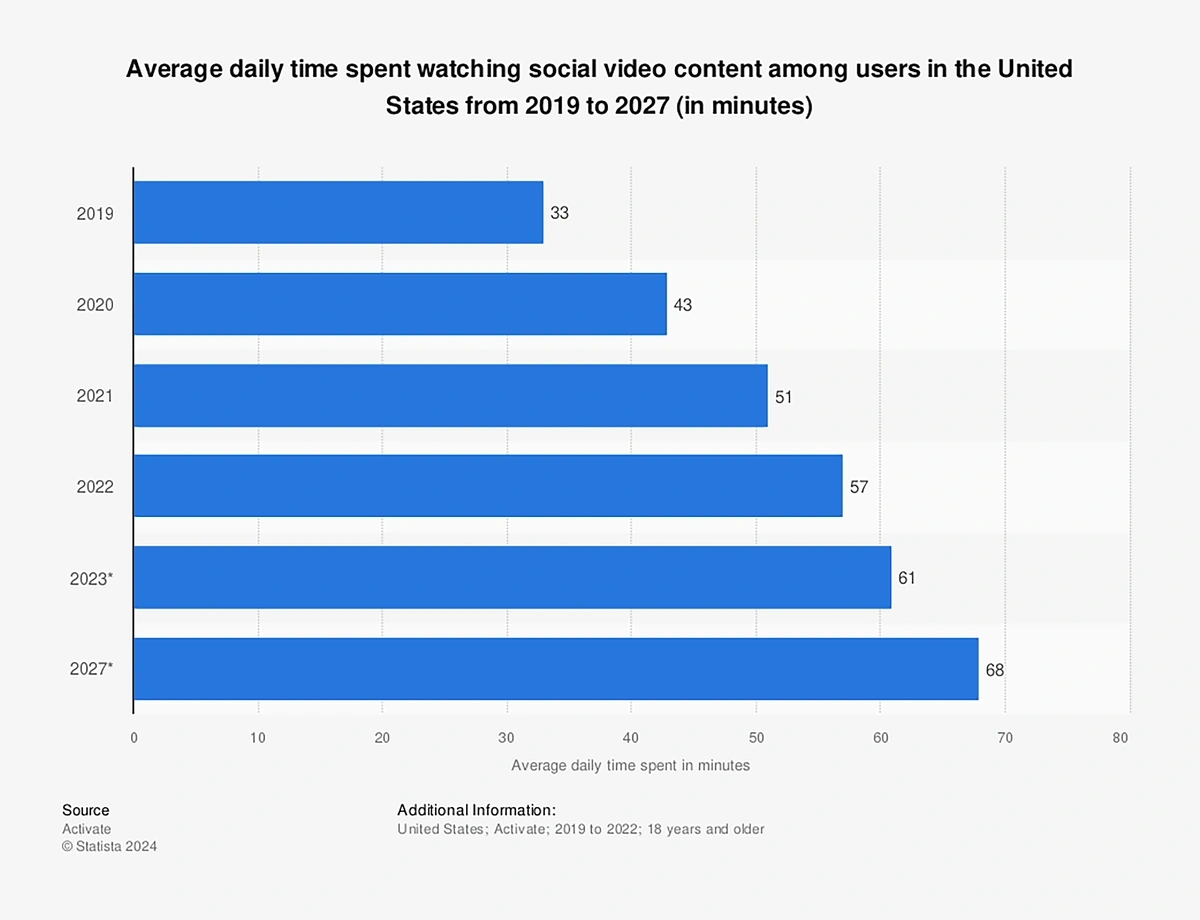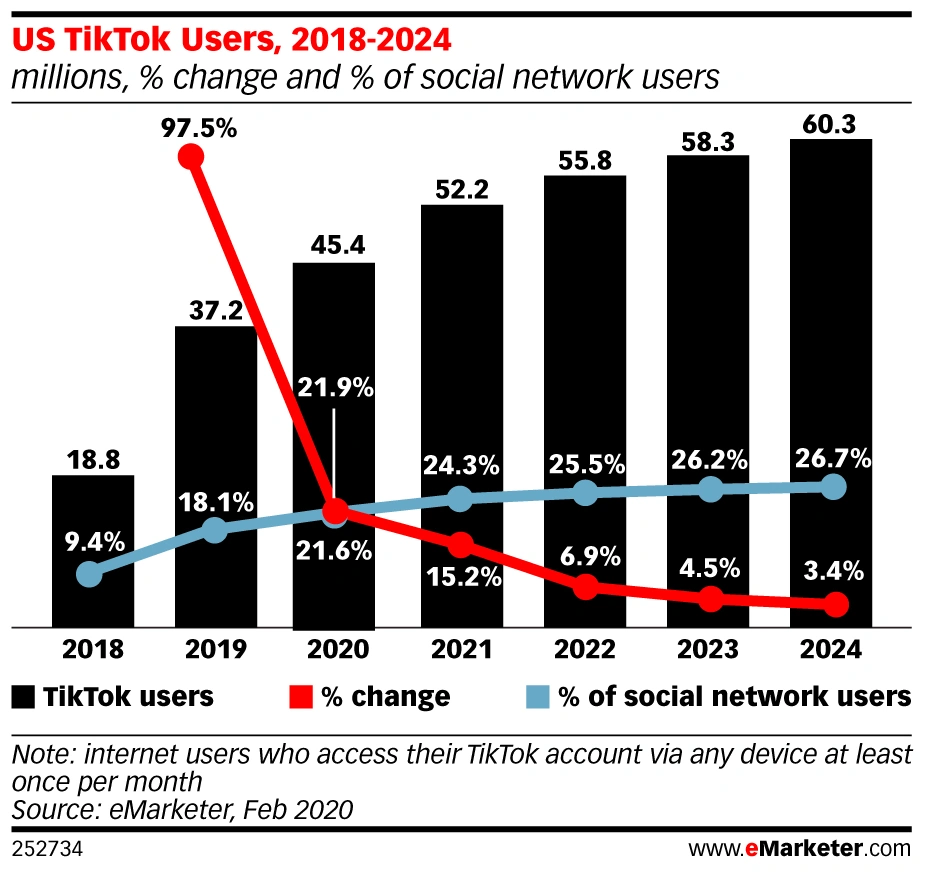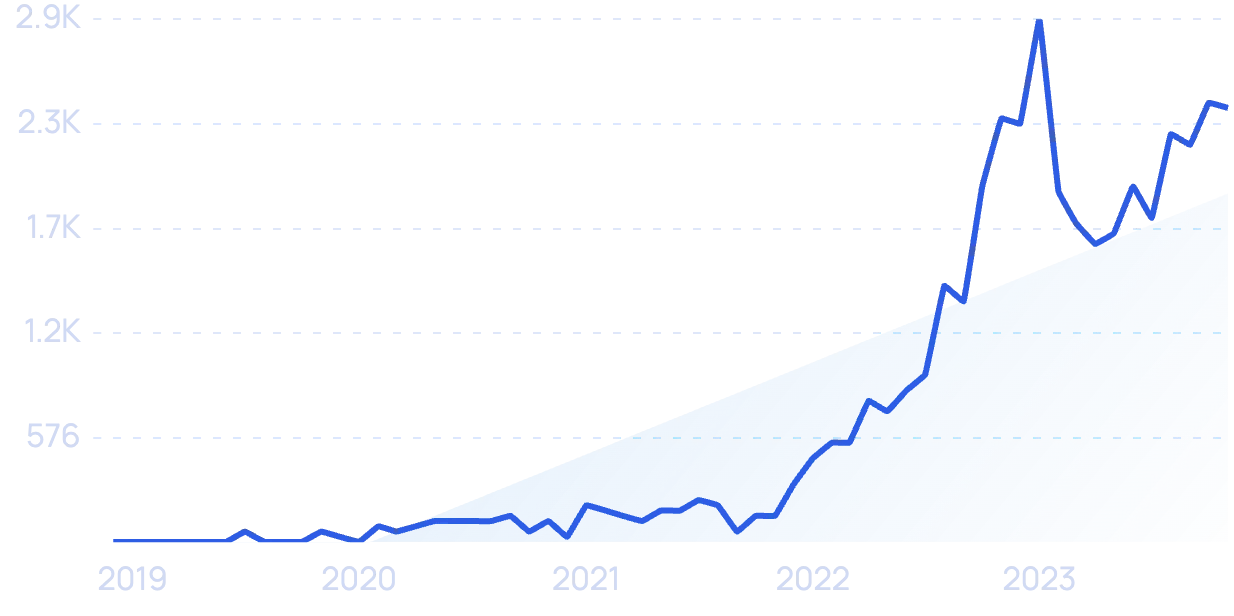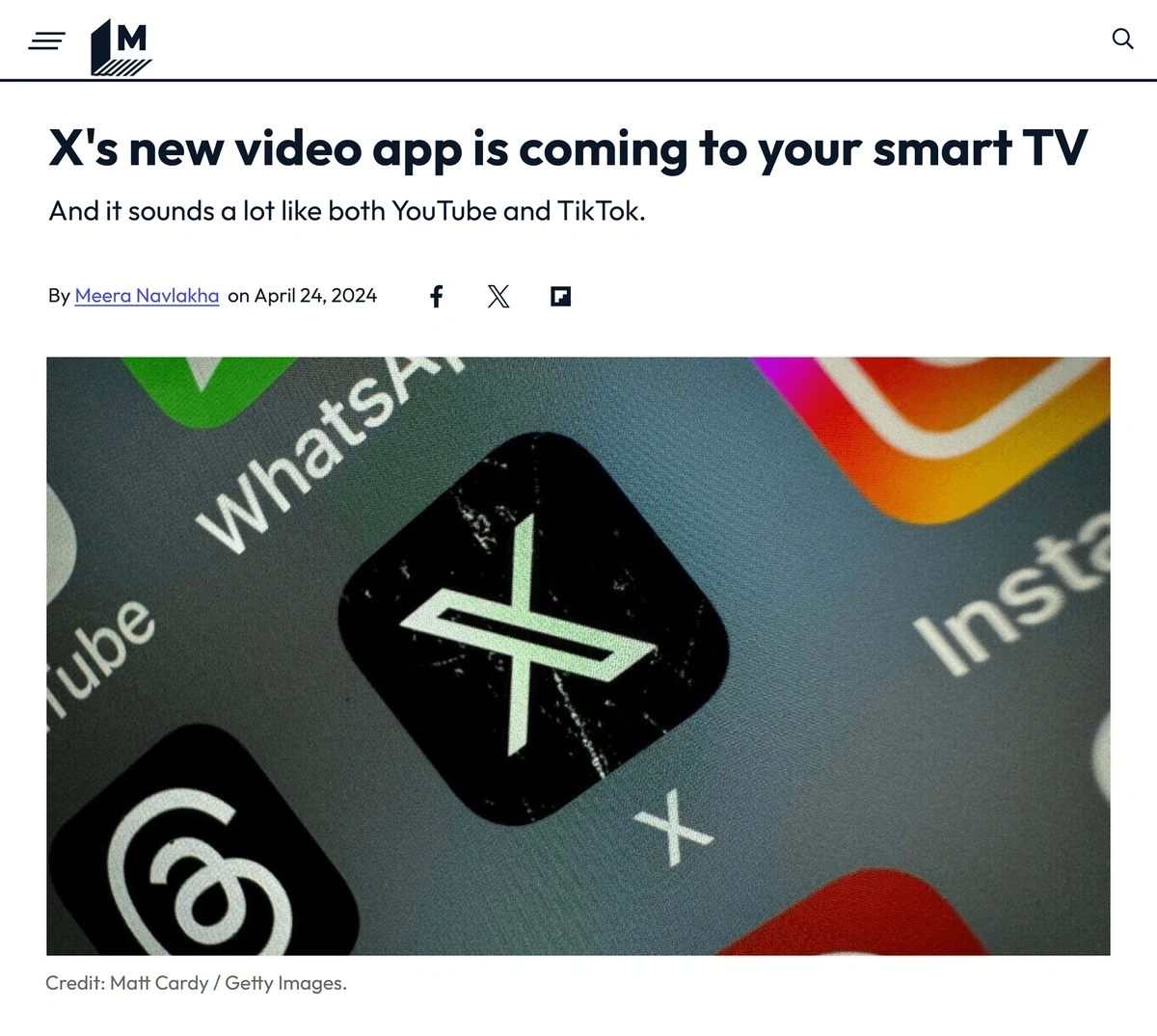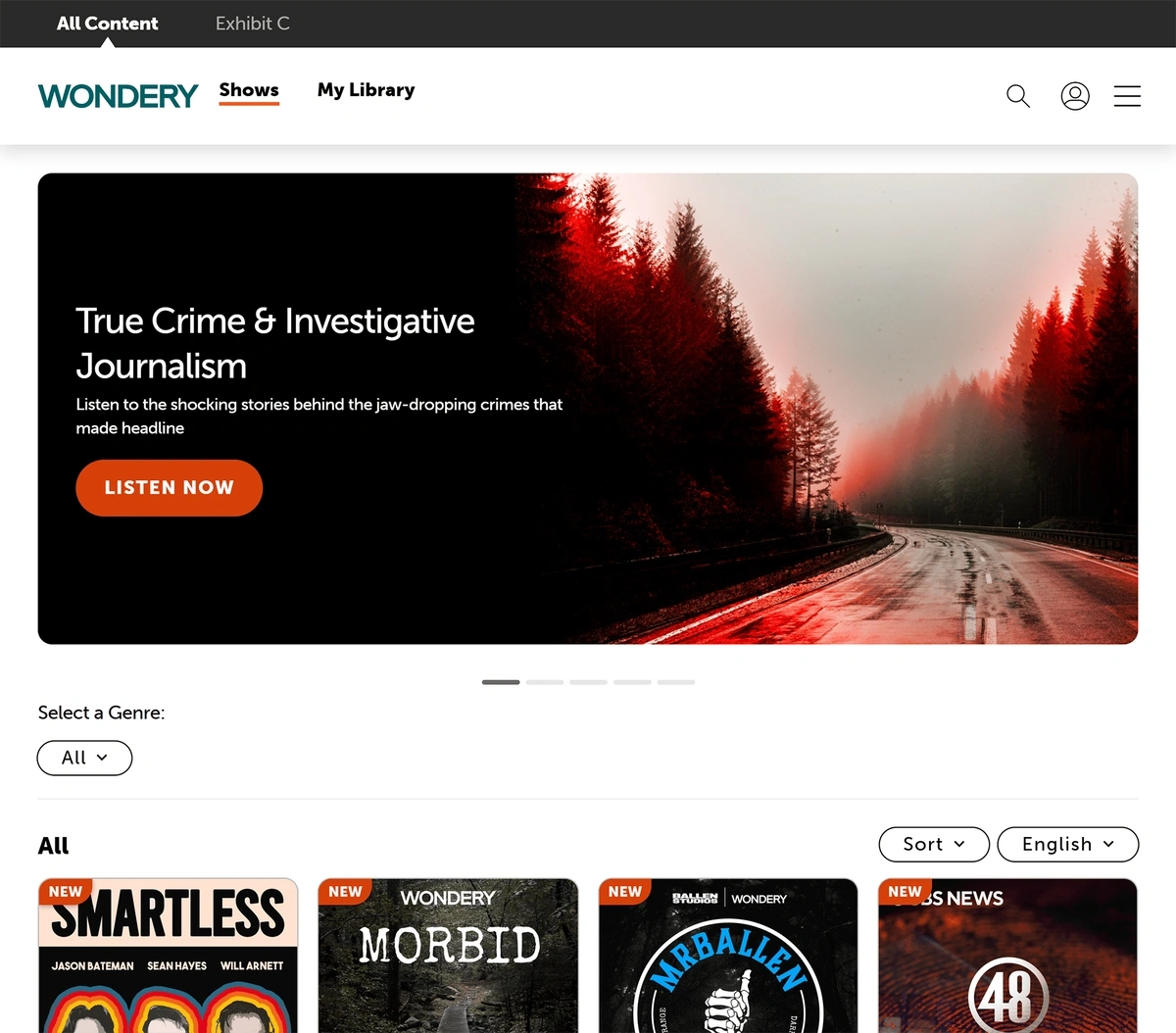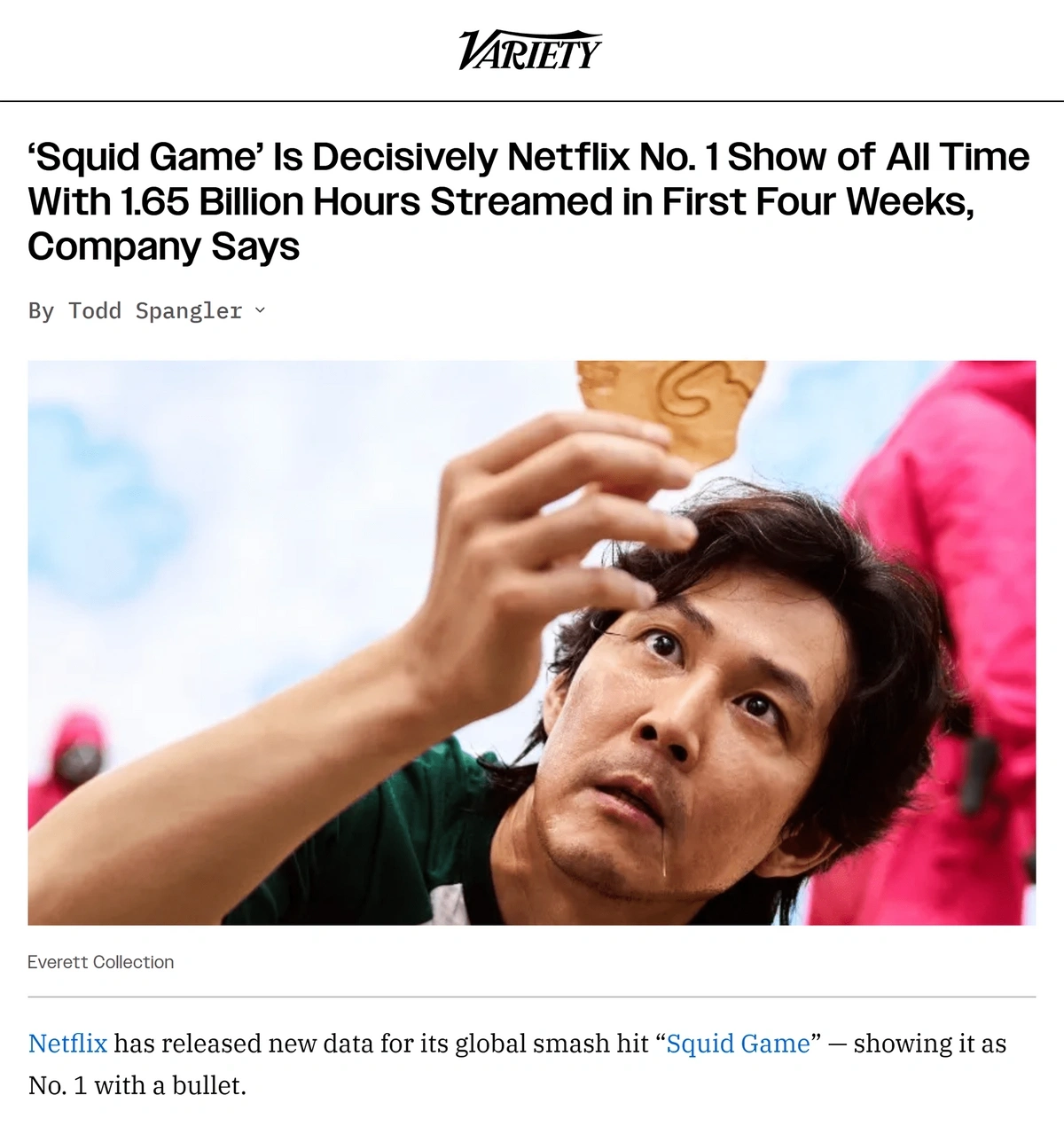
8 Top Entertainment Trends (2024 & 2025)
You may also like:
Here are the 7 biggest entertainment trends for 2024 and 2025.
And specific examples of what's pushing each trend forward.
Whether you're in the entertainment industry or just interested in the space, these are the top trends to watch.
1. Social Video Continues to Grow
The amount of time Americans spend watching social video has grown by nearly 2x since 2019.
The amount of "US minutes" spent consuming social media videos.
Today, it's estimated that US consumers spend nearly an hour per day watching videos on social media.
The main driver of this growth? TikTok.
Searches for "TikTok" continue to climb.
At the time of writing, TikTok has 1.5 billion monthly active users.
Notably, TikTok creators are turning their followers into real businesses.
One tell-tale sign: TikTok-related products and services that have started to surface, like TikTok editors and TikTok dropshipping.
Searches for "TikTok dropshipping" have increased by 8,200% in 5 years.
Meanwhile, even non-video platforms (like Instagram and X) are pushing video content.
In the case of Instagram, their Reels product has helped them go head-to-head against TikTok's short-form video content.
(In fact, much of the content uploaded as Reels were originally TikTok videos).
And with X (formerly Twitter), is looking to add a dedicated video app.
X is looking to hop on the social video trend with a dedicated video app.
But no matter which platform ends up on top, one thing is for sure: social video is a huge trend.
As 5G network coverage expands, video streaming and download speeds will rise.
And we think social video usage will, too.
2. AI Causes Industry-Wide Disruption
Generative AI platforms like Midjourney and ChatGPT are likely to have massive impacts on the entertainment space.
In fact, LLMs are already influencing how media is being produced.
For example, text-generation tools can help screenwriters brainstorm, generate and improve scripts.
LLM output of a science fiction series script outline.
Image-creation platforms can aid in storyboarding, visualizing ideas and visualizing scenes.
In the music space, tools like Google's MusicLM allow for the generation of music with a text prompt.
MusicLM is essentially ChatGPT for music.
And perhaps most disruptive of all: generative video tools.
OpenAI's Sora sent shockwaves through the movie and TV industry with their examples of generative video outputs.
Examples of outputs from Sora.
The Exploding Topics startup directory shows that numerous fast-growing media startups are leaning into AI. Kling (video), Loudly (music) and Gling (YouTube content) are all in the top 5 as of November 2025.
It's not clear whether AI will be a net positive or negative for the industry.
Some think that generative AI tools will replace existing roles, like screenwriters, illustrators and FX experts.
While others see AI as just another tool (like the word processor, computer and GPUs) that actually lead to more total net jobs.
3. Streaming Wars Start to Settle
Over-the-top ("OTT") streaming platforms are quickly replacing TV for many millennials and Gen Z.
In fact, streaming now accounts for over 1/3rd of all TV usage (surpassing traditional broadcast and cable).
Which explains why several competitors have cropped up recently to take on incumbents like Netflix, Disney+, and Amazon Prime Video.
However, most new entrants to the streaming wars have failed.
Quibi crashed and burned with its short-form offering.
Paramount Plus has fared better than others at muscling into the mainstream, although that has come at a huge finanical cost. And it has still struggled to reach anything near the subscriber numbers of Disney+ or Netflix.
(As of May 2025, Netflix is receiving 1.3 billion monthly visits.)
Apple TV+ is more of a mixed bag with around 25 million subscribers (compared to over 200 million for both Netflix and Amazon Prime Video).
The failure of new streaming entrants is leading to consolidation in the space.
Consumers are largely sticking to a few mainstay streaming subscriptions.
While other streaming platforms (like Starz and Peacock) struggle to take on and retain new users.
Which has helped Netflix add 37 million subscribers over the past year. As of October 2025, it's ranked at #3 on the list of most-visited entertainment websites worldwide.
4. Cloud Gaming Goes Mainstream
"Cloud gaming" searches are up 10x over 5 years.
There are lots of important entertainment trends in the gaming industry happening right now.
The Xbox Series X and PlayStation 5 are both in the "middle ages" of their console lives.
Virtual reality and augmented reality gaming tech are making strides.
Esports is gaining steam.
And mobile gaming is more popular than ever.
But the most important gaming trend of 2024 and 2025 may be cloud gaming.
There are over 3.2 billion gamers in the world. And very few of them have the hardware required to play the latest, most demanding games.
Cloud gaming solves this problem by streaming video game content from remote servers to your device.
That way, your computer (or phone, or smart TV) isn't the one doing the heavy lifting.
Major offerings include Nvidia's GeForce Now, PlayStation®Plus, and Xbox's Game Pass.
Starfield launched as a day 1 Xbox Game Pass game, a big moment for cloud gaming.
However, it's not clear whether the model makes total sense for consumers, developers or platforms.
Either way, expect growing interest (and investment) in cloud gaming and Xbox Game Pass-type subscriptions in 2025.
5. Podcasting Becomes a Mainstream Medium
Online search interest in the podcast network Wondery has grown by 191% in 5 years.
Approximately 162 million people listen to podcasts at least once per month.
And that's in the US alone.
Amateur podcasts are springing up every day. In fact, there are now over 3 million active podcasts.
But the industry is also getting a lot more professional. And turning podcasting from a hobby to a legit business model.
Branded podcasts prove the format can work as marketing just as well as it does as entertainment.
(Don't believe us? Check out what Microsoft, Basecamp, and even Gucci are doing with theirs.)
And podcast networks are aggressively buying and developing new series.
Some include tie-ins to current events and popular TV shows.
Wondery in particular has been on a tear lately.
Wondery's top podcast series.
These podcast networks have attracted plenty of attention from investors with deep pockets.
Wondery has backing from 20th Century Fox as well as VC firms like Greycroft and Lerer Hippeau Ventures.
While the podcast and entertainment network The Ringer was acquired by Spotify for $196 million.
That was followed by ESPN essentially buying a single podcast, the Pat McAfee show, for $85 million over 5 years.
Pat McAfee's popular podcast led directly to an $85 million contract.
With so much money at stake, you can bet that the writing, stars, and production quality of the average podcast will keep getting better.
6. New(ish) Sports Sprout Up

Fitness is a "meta trend" that's impacting lots of areas of our lives.
Inside, you have garage gyms, Zwift, and Peloton.
But outside the house, things are more interesting:
If you don't mind a little danger, axe throwing has been taking off.
Axe throwing lanes at Bad Axe Throwing.
Or if you'd enjoy an adventure in the great outdoors, there's also bikepacking.
(Yes, that's backpacking on a bike.)
And who isn't up for a friendly game of pickleball?
These activities may not be 100% new, but they've been getting more popular each year. And they're starting to go mainstream.
7. The Korean Wave Goes Worldwide
The Korean Wave (or Hallyu) refers to the way South Korean culture is gaining international popularity.
It's been happening in Asia since the '90s but has recently picked up more steam in the West.
Here are a few examples.
Netflix's mega hit Squid Game generated 1.85 billion hours streamed within a month of release.
(Making the Korean comedy/drama their #1 all-time most popular show)
Squid Game is Netflix's most-watched show...ever.
Videos and streams of people eating on YouTube and Twitch are attracting large Western audiences, pulling in up to tens of millions of views each.
K-pop is finding a bigger international audience as well.
The supergroup BTS made a big splash with their live #HomeFest performance on the Late Late Show with James Corden.
And many K-pop groups are having popular tours across North America in 2024.
Finally, Korean Drama shows ("K Dramas") are becoming binge watches for many Western audiences.
Searches for the term "K Drama" are up 3.8x over 5 years.
In fact, more than 60% of global Netflix users have watched a K drama.
8. Fans support creators directly
Why has direct fan support become one of the biggest trends in entertainment over the last few years?
With cord cutting at an all-time high, consumers need something to watch.
While many folks turn to streaming services to fill the gap, others find themselves consuming content directly from individual creators on YouTube.
The problem is that many creators have a difficult time making a living off of YouTube ad revenue.
Especially those that cover a niche topic, like knitting or a specific movie genre.
Crowdfunding sites like Patreon have exploded to help fans support creators directly.
Unlike Kickstarter, Patreon supporters voluntarily pay a monthly fee that goes directly to the creator.
In exchange, supporters usually get some sort of bonus content, like live Q&A sessions.
An example of a Patreon creator page.
While most creators use Patreon to supplement their income, others are making a killing from this model.
For example, artist Amanda Palmer brings in an estimated $25k/month from her Patreon supporters.
And the True Crime Obsessed podcast is thought to bring in over $190,000 in monthly revenue via ongoing, crowdfunded support.
Wrapping Up
Those are the 8 most important entertainment industry trends for 2024 and beyond.
The entertainment industry is quickly moving from the living room to our pockets.
And the companies that adapt to this shift in where and how consumers are entertained are poised to become media mainstays.
Stop Guessing, Start Growing 🚀
Use real-time topic data to create content that resonates and brings results.
Exploding Topics is owned by Semrush. Our mission is to provide accurate data and expert insights on emerging trends. Unless otherwise noted, this page’s content was written by either an employee or a paid contractor of Semrush Inc.
Share
Newsletter Signup
By clicking “Subscribe” you agree to Semrush Privacy Policy and consent to Semrush using your contact data for newsletter purposes
Written By
Brian is the co-founder of Exploding Topics. He is an internationally recognized SEO expert and also the founder of Backlinko. Bri... Read more
